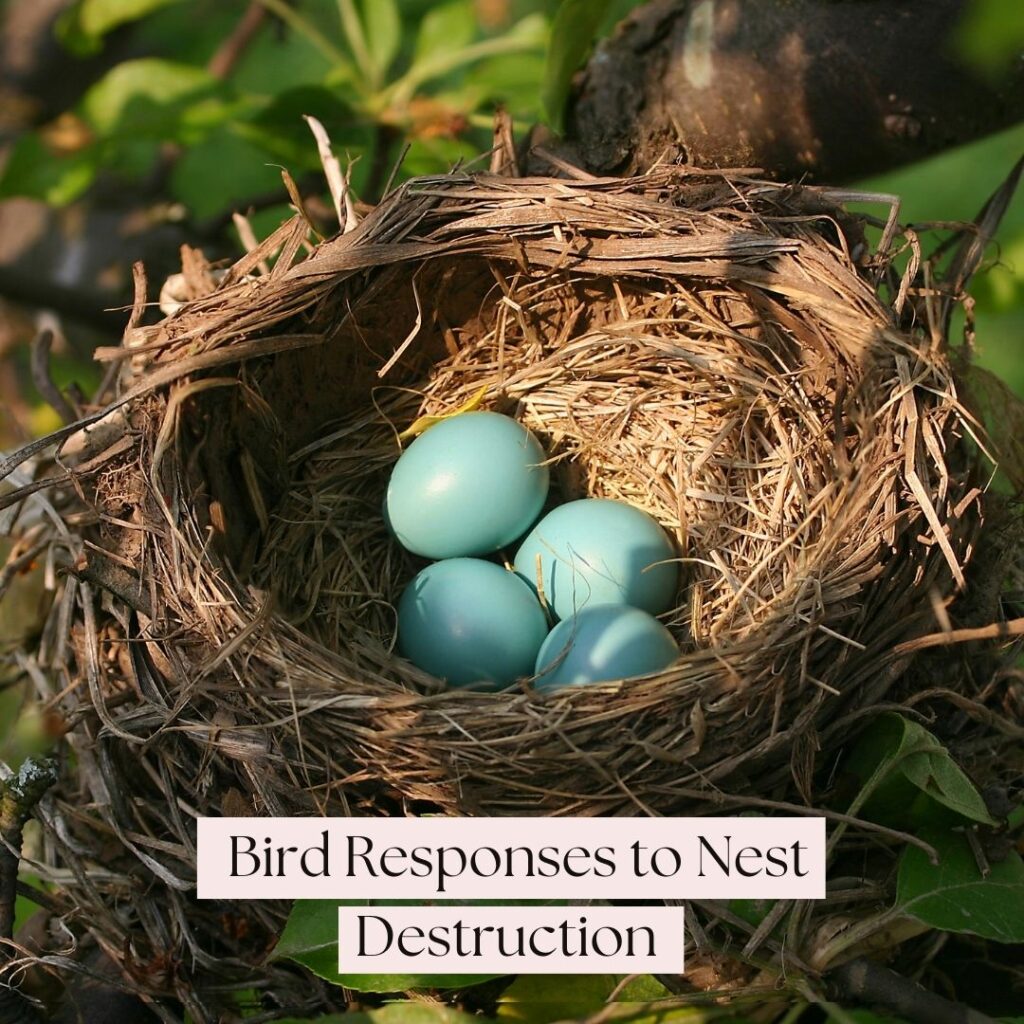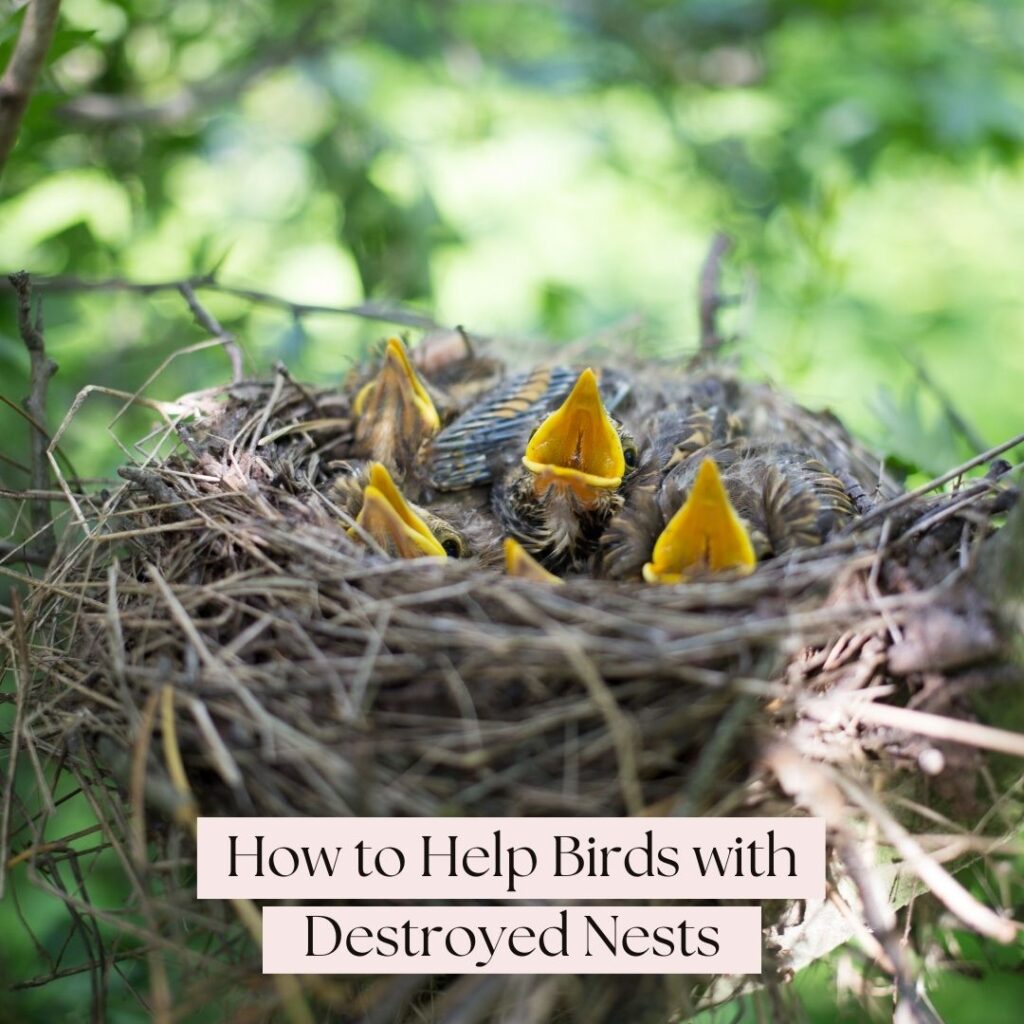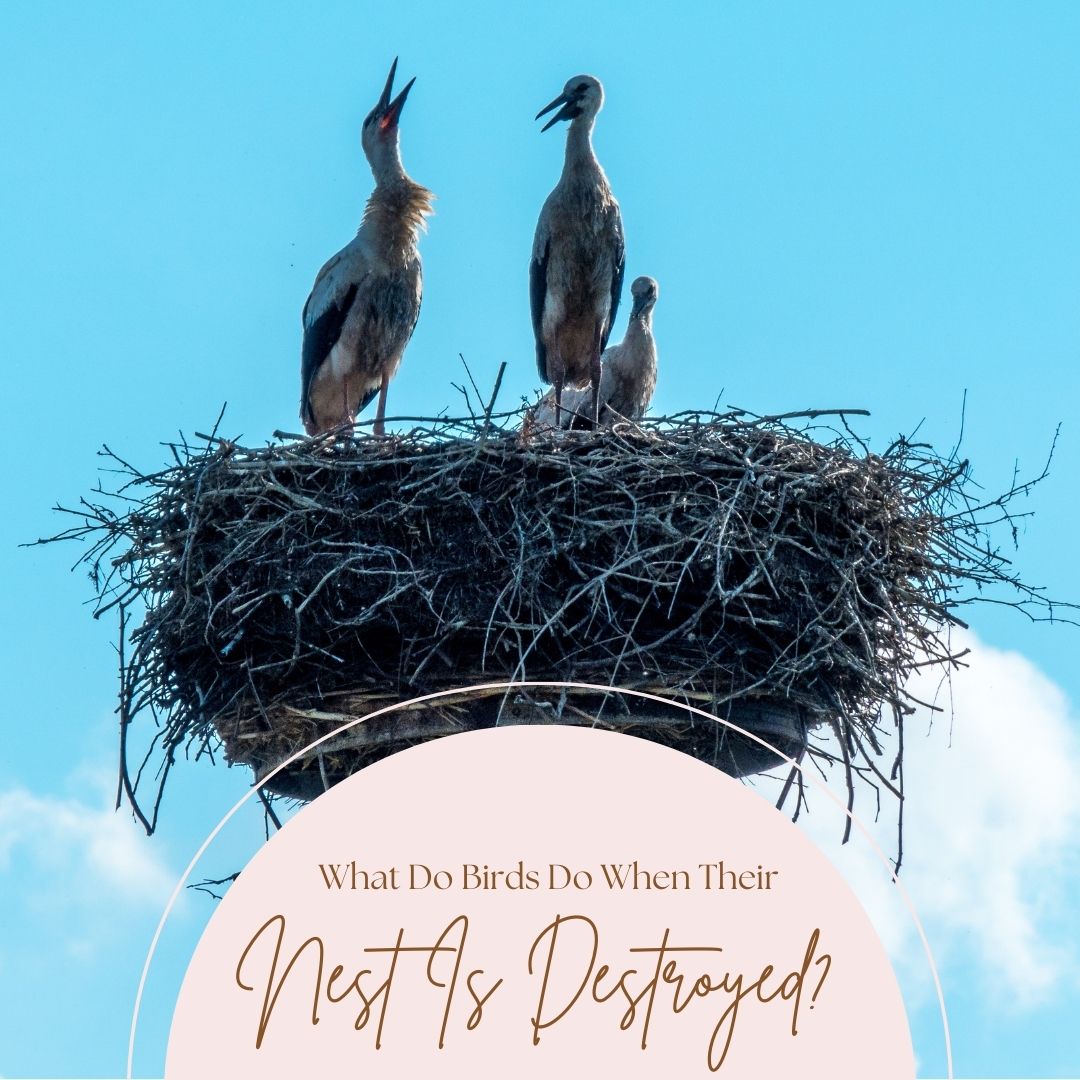What Do Birds Do When Their Nest Is Destroyed
Table of Contents
When a bird’s nest is destroyed, it can be a traumatic moment not only for the avian parents but also for any eggs or fledglings inside. This unfortunate event may occur for various reasons such as inclement weather, predators, or unintentional human interference. Understanding the different ways birds react to the destruction of their nests can provide valuable insight into their resilience and adaptability in the face of adversity.
Every bird species responds differently to the loss of their nest. For some species like the American goldfinch, rebuilding the nest in the same location or nearby becomes the primary focus to restore a safe haven for their offspring. Alternatively, other species may choose to abandon the site altogether, seeking safer nesting grounds elsewhere. This adaptive behavior reflects their instinctual drive to ensure the survival of their young and increase the chances of reproducing successfully.
Ultimately, the response of birds to the destruction of their nest is dictated by several factors, including the availability of resources, the risks posed by predators, and the individual bird’s ability to adapt in challenging circumstances. These complex behaviors reveal the intricate world of birds and the unyielding determination they possess to carry on with their nesting activities and protect their offspring.
Common Reasons for Nest Destruction
Predators
One leading cause of nest destruction is predators. Various animals, such as raccoons, opossums, and foxes, may raid a bird’s nest in search of eggs or chicks. This damage forces parent birds to either rebuild the nest or abandon it in favor of a new location.
Natural Disasters
Natural disasters also pose a significant threat to bird nests. Extreme weather conditions, including strong winds, heavy rains, and lightning, can damage or completely destroy a nest. Consequently, the affected birds must decide whether to rebuild or find a safer nesting area.
Human Interference
Human activities contribute to nest destruction as well. For instance, gardeners may accidentally damage nests when trimming trees, pruning bushes, or cutting branches. It is crucial for people to be aware of their surroundings and take care when working in areas where birds may have built nests. Additionally, construction projects and habitat loss can result in the forced relocation of bird populations and the destruction of their nesting sites.

Bird Responses to Nest Destruction
When a bird’s nest is destroyed, the bird will adopt various strategies to cope with the situation. This section will discuss three key approaches these birds take, which include rebuilding a new nest, relocating, and adopting existing nests.
Rebuilding a New Nest
One common response for birds after their nest has been destroyed is to rebuild a new one. This often involves finding suitable nesting materials and constructing a new nest in a similar location to the one they lost. Some birds, such as bald eagles, will attempt to rebuild their nest using any available materials and will stay close to the area to protect their chicks from predators.
Relocation
Another strategy some birds employ after the loss of their nest is to find a new location entirely. The bird may assess the risks associated with the original site and choose an alternative location that offers better protection from predators or other threats. In some cases, migrated birds, like certain hummingbird species, may even fly back to their original nesting area to start anew.
Adopting Existing Nests
Lastly, some birds may choose to adopt an existing nest if their own is destroyed. This can involve finding an unoccupied nest or taking over a nest that has been abandoned by another bird. In some cases, the bird may even make minor modifications to the existing nest to suit their specific needs before settling in.
In summary, birds can adapt to the destruction of their nest in various ways, depending on their species and individual circumstances. By rebuilding a new nest, relocating, or adopting existing nests, birds demonstrate an impressive level of resilience and adaptability in the face of adversity.
Factors Influencing Bird Reactions
Timing and Breeding Season
When a bird’s nest is destroyed, the time of the year and the specific stage of the breeding season can greatly influence how the bird reacts to the loss. During the early stages of breeding season, birds might be more likely to quickly relocate and rebuild a nest, as they still have time to lay new eggs.
However, if the destruction occurs later in the breeding season, the chances for successful reproduction might be reduced. With less time to rebuild a nest and lay eggs, some birds may choose to wait until the following breeding season to try again.
Species-Specific Behaviors
Different bird species have varying behaviors and responses when their nests are destroyed. For some species, rebuilding or repairing the nest is the typical response. For example, if the original nest was made of soft materials like leaves or grass, the bird may be able to simply repair the damage. On the other hand, if the nest was made of harder materials like twigs or straw, the bird may have to start from scratch.
Other bird species, such as storks, herons, and some birds of prey, construct large and complex nest structures. In these cases, rebuilding can be a more challenging process that requires the cooperation of both the male and female. Males source the materials, while females take care of most of the actual building work.
It is important to note that species-specific factors can also affect a bird’s decision to rebuild or abandon a destroyed nest. These can include availability of nesting sites, risk of predation in the area, or changes to the local habitat.

How to Help Birds with Destroyed Nests
When birds experience nest destruction, they face stress and the potential loss of their eggs or young ones. It is important for people who care about birds to help them during these challenging times. In this section, we will explore some ways to provide support, including providing nesting materials, installing birdhouses, and reducing human impact.
Providing Nesting Materials
One way to help birds rebuild their destroyed nests is by offering suitable nesting materials in the vicinity. It’s essential to ensure the materials are natural and safe for the birds. Some suitable items include:
- Thin, flexible stems
- Raffia
- Seagrass
- Willow fronds
- Bendy reeds
- Straw
- Long grass
- Vines
Place these materials in an open area for birds to find and use in their nest reconstruction process.
Installing Birdhouses
Birdhouses can provide birds with a safe and secure place to build their nests, especially when their original nest has been destroyed. Ensure the birdhouses are the correct size for the species of birds in your area and are mounted at the proper height to protect them from predators. These artificial nesting sites can assist birds in rebuilding their homes and safeguarding their future breeding activities.
Reducing Human Impact
Another important factor in helping birds with destroyed nests is to limit human disturbance in nesting areas. To achieve this, follow these guidelines:
- Keep a safe distance from nests, ideally at least 60 meters away, to prevent birds from feeling threatened.
- Avoid touching nests, as human scent may attract predators.
- If you come across a ground nest, mark the area with an upright stick or bamboo pole to remind yourself and others to avoid that area.
- During breeding season, be mindful of any habitat disturbances that may disrupt nesting or cause nest destruction.
By providing nesting materials, installing birdhouses, and reducing human impact, you can play a significant role in helping birds recover from destroyed nests and continue their important ecological contributions to our environment.
Conclusion
In the event of a nest being destroyed, birds will typically assess the situation and decide on their next course of action. The chosen response often depends on the extent of the damage and the specific species of the bird involved.
For minor damage, birds may choose to repair their nests and continue using them. However, when faced with more severe destruction, birds will likely abandon their damaged nests and build new ones nearby. It is important to note that birds in distress may exhibit outward signs of sadness, such as crying out loud or remaining silently close to the destroyed nest.
When encountering an empty or abandoned nest, it is essential to refrain from approaching or disturbing it. Parent birds often forage for food nearby while keeping watch over their young, even when seemingly unattended. Showing respect for their space and allowing them to recover and rebuild is crucial for their survival.
In conclusion, the ability of birds to adapt and overcome the loss of their nests speaks to their resilience and determination. Understanding their behavior and response mechanisms during such critical times can help enhance our knowledge of bird species and promote a harmonious coexistence between humans and our avian neighbors.






